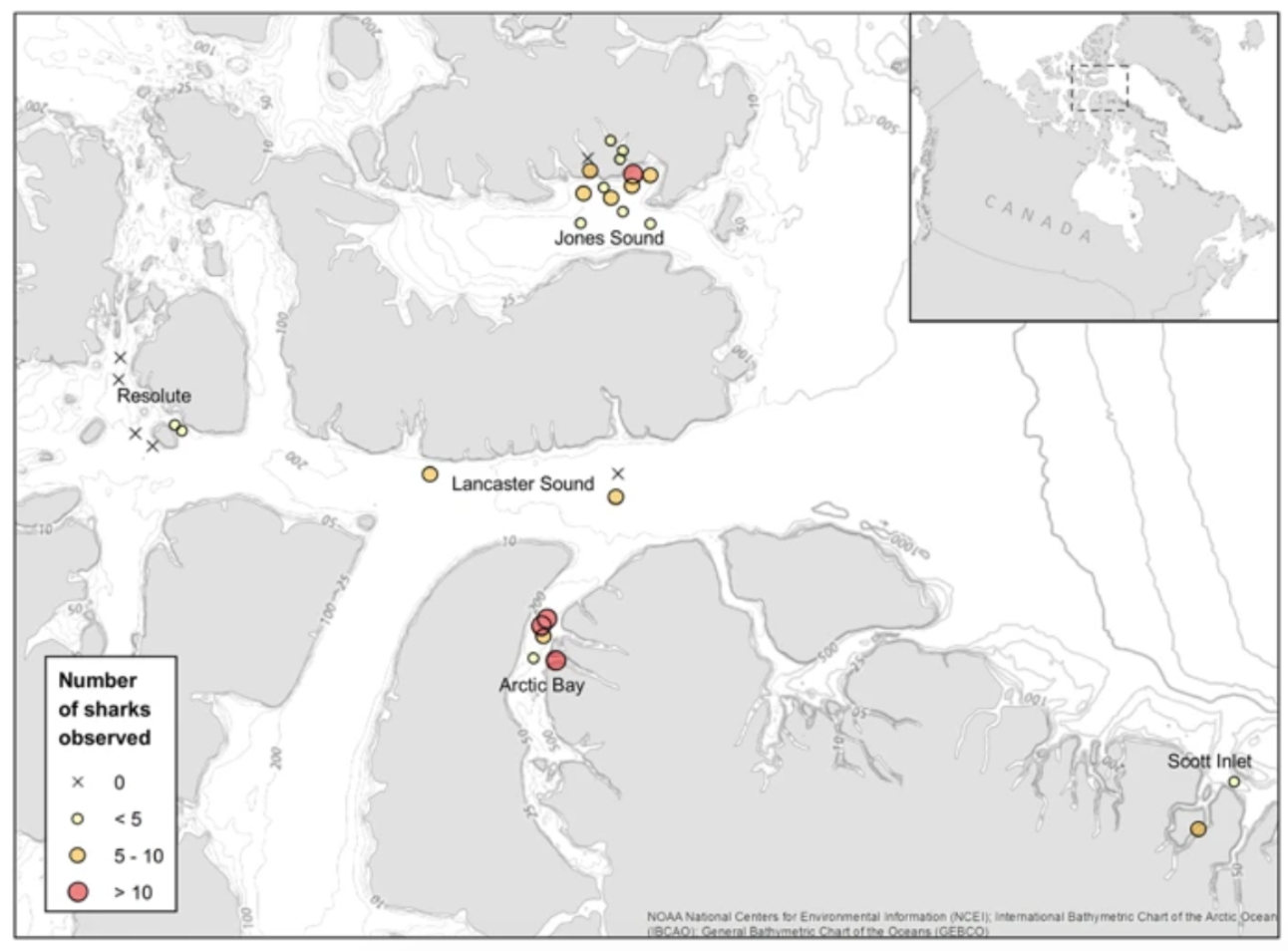Greenland Shark Filmed Using Programmable Subsea Camera
Potentially living over 400 years, Greenland Sharks have the longest lifespan of any known vertebrate
Using the subsea scripting API on the programmable SubC camera, researchers were able to set up a time-lapse during their deployments
The results of the study illustrate the potential vulnerability of the Greenland Shark
Our friends at Marine Institute gathered 258 hours of footage as part of their research to estimate the local densities of the Greenland Shark (Somniosus microcephalus) in deep-water, data-poor regions of interest for fisheries development and marine conservation in Nunavut, Canada.
Blind Sharks with a Long Lifespan
The Greenland Shark is a majestic creature of the deep and one of the very few polar shark species. Potentially living over 400 years, it has the longest lifespan of any known vertebrate. Coming in at 7m long and up to 3100lbs, they are among the largest of sharks. And they’re blind! They aren’t born blind, but, all documented mature Greenland sharks have parasites attached to their eyeballs. Luckily, they have a very keen sense of smell that they rely on to hunt. As an adaptation to living in the deep, they have a high concentration of trimethylamine in their tissues, which causes the meat to be toxic.
This image identifies shark distributions in Lancaster Sound, Nunavut, Canada.
SubC Technology Makes Researching Easier
The study took place between July-September 2015 and 2016. It was conducted by deploying a baited autonomous imaging system -- the SubC Autonomous Camera System -- during joint exploratory fishing and scientific cruises. Using the subsea scripting API on the programmable subsea camera, they were able to set up a time-lapse during their 31 camera deployments. They discovered that the Greenland Shark arrived at 80% of the deployments with 142 individual sharks being identified from the video footage using unique marks on their skin.
Researchers Brynn Devine of Memorial University and Laura Wheeland of Fisheries and Oceans Canada were able to collect additional data such as shark lengths and swimming speeds from the video footage using integrated reference lasers on the 4K subsea camera for scale.
Images of Greenland sharks attracted to the baited camera. See the paper for more information.
The Species’ Vulnerability
“We observed a wide range of shark sizes, from lengths well over three metres to quite small sharks, less than 1.5 metres in one particular region,” Ms. Devine said. “Although remarkably, based on our present understanding of the minimum size at maturity for this species, none of the sharks we observed were likely old enough to reproduce.”
The results of the study illustrate the potential vulnerability of the Greenland Shark and that Nunavut’s Lancaster Sound eco-zone may be of particular importance for Arctic species.
View a long sample of Greenland shark footage:
Read more about their incredible findings in the references below:
References:
Citation: Devine, Brynn & Wheeland, Laura & Fisher, Jonathan. (2018). First estimates of Greenland shark (Somniosus microcephalus) local abundances in Arctic waters. Scientific Reports. 8. https://doi.org/10.1038/s41598-017-19115-x
Centre for Fisheries Ecosystems Research, Fisheries and Marine Institute of Memorial University of Newfoundland. https://www.mi.mun.ca/departments/centreforfisheriesecosystemsresearch/
Wikipedia - Greenland Shark: https://en.wikipedia.org/wiki/Greenland_shark



